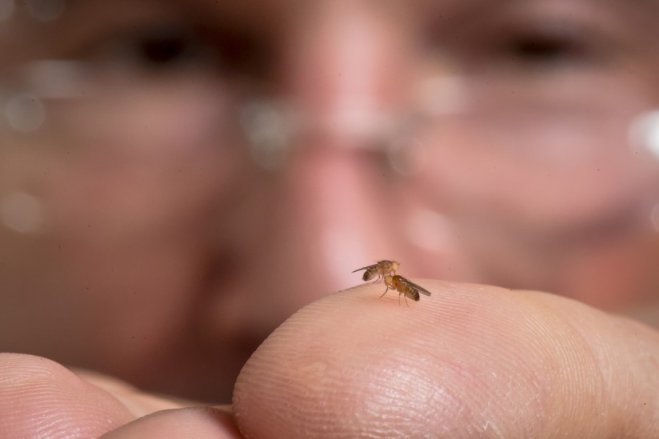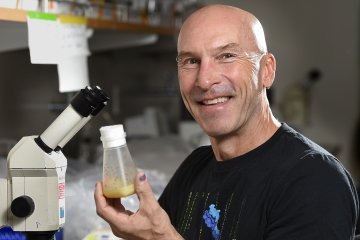
The study was published Feb. 18 in the Journal of Gerontology: Biological Sciences. Tower’s
Tower and his colleagues found that treating flies with the steroid hormone mifespristone/RU486 (used in humans for terminating pregnancy) decreased egg production in females while increasing longevity.
Similar effects were seen by tweaking the diets of flies and mice, but the effects were sometimes opposite in males versus females.
The effect on the population as a whole
Increasing life span also increased the acceleration of
Suppose you could create a graph of the mortality rate of everyone born in a single year — from birth until the last person died. You’d see two key things: Off the bat, there’d be a small number of individuals dying here and there — typically due to infections and pathogens. That’s
Then, as the group aged, you’d see the mortality rate rise exponentially until the last person died. This acceleration is thought to represent true aging — the inexplicable breakdown of the body over time.
 Our results show that dietary and genetic interventions sometimes have opposite effects on that acceleration in males versus females.
Our results show that dietary and genetic interventions sometimes have opposite effects on that acceleration in males versus females.
John Tower
«We all speculate, but no one has really figured out what the cause of that acceleration is," Tower said. «Our results show that dietary and genetic interventions sometimes have opposite effects on that acceleration in males versus females.»
What the
«There are weaker,
Natural selection may favor genes that kill us
Tower said that the findings would also seem to support the antagonistic plieotropy model for aging, proposed in 1957 by George Williams of Michigan State University. (Pleiotropy refers to a single gene that affects multiple physical characteristics.) In part, the model tries to explain why our bodies ultimately break down and die.
Williams suggested that natural selection might select for a gene that creates a fatal flaw later in life if it offers some significant benefit earlier — that is, if it helps individuals reproduce successfully, it’s beneficial to the species even if it does ultimately shorten the individual’s life span.
The mifespristone intervention appears to prevent such a
The antagonistic pleiotropy model has received a number of criticisms over the past
Tower’s study supports the idea that sexual antagonistic pleiotropy, in which a gene benefits one sex but has a detriment for the other sex, maintains genes in the genome that shorten life span of both sexes.
The research was funded by the Department of Health and Human Services (grant AG011833), the Southern California Environmental Health Sciences Center (grant 5P30ES007048), the Returned Overseas Chinese Scholars Research Merit Aid and the National Natural Science Foundation of China (31500970).
Source: http://news.usc.edu/92062/some-aging-treatments-shown-to-have-opposite-effects-on-males-and-females/


